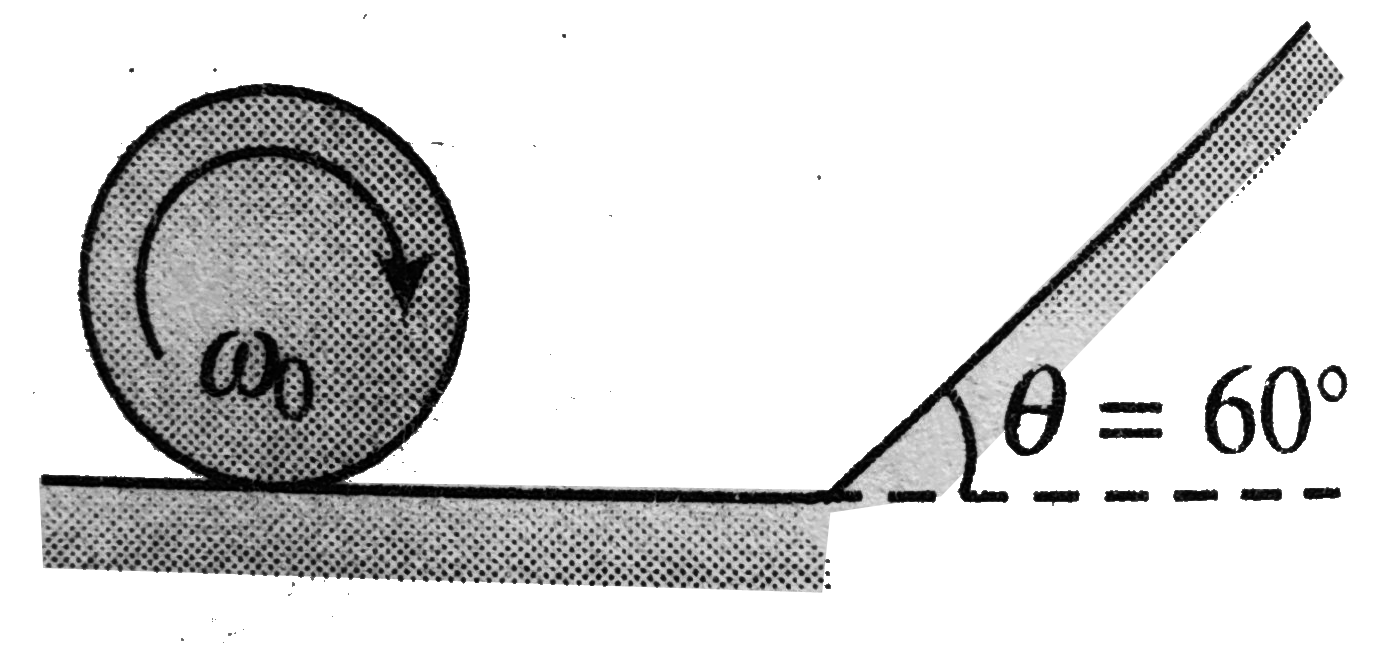A mass attached to a spring is free to oscillate, with angular velocity ω, in a horizontal plane without friction or damping. It is pulled to a distance x0 and pushed towards the centre with a velocity v0 at time t=0. Determine the amplitude of the resulting oscillations in terms of the parameters ω,x0andv0.
√v20ω2−x20
√ω2v20+x20
√x20ω2+v20
√v20ω2+x20
The correct Answer is:D
To determine the amplitude of the resulting oscillations of a mass attached to a spring, we can follow these steps:
1. Understanding the System:
The mass is attached to a spring and oscillates in a horizontal plane with angular velocity ω. At time t=0, it is at a distance x0 from the equilibrium position and is pushed towards the center with a velocity v0.
2. Displacement Equation:
The displacement x(t) of the mass at any time t can be expressed as:
x(t)=Acos(ωt+ϕ)
where A is the amplitude and ϕ is the phase constant.
3. Initial Displacement:
At t=0:
x(0)=Acos(ϕ)=x0
This gives us our first equation:
x0=Acos(ϕ)(Equation 1)
4. Velocity Equation:
The velocity v(t) is the time derivative of displacement:
v(t)=dxdt=−Aωsin(ωt+ϕ)
At t=0, the velocity is:
v(0)=−Aωsin(ϕ)=−v0
This gives us our second equation:
v0=Aωsin(ϕ)(Equation 2)
5. Squaring Both Equations:
From Equation 1, squaring both sides gives:
x20=A2cos2(ϕ)
From Equation 2, squaring both sides gives:
v20=A2ω2sin2(ϕ)
6. Adding the Two Equations:
Adding the squared equations:
x20+v20ω2=A2cos2(ϕ)+A2sin2(ϕ)
Using the Pythagorean identity cos2(ϕ)+sin2(ϕ)=1:
x20+v20ω2=A2
7. Solving for Amplitude A:
Rearranging gives:
A2=x20+v20ω2
Therefore, the amplitude A is:
A=√x20+v20ω2
Final Result:
The amplitude of the resulting oscillations is:
A=√x20+v20ω2
The mass is attached to a spring and oscillates in a horizontal plane with angular velocity ω. At time t=0, it is at a distance x0 from the equilibrium position and is pushed towards the center with a velocity v0.
The displacement x(t) of the mass at any time t can be expressed as:
x(t)=Acos(ωt+ϕ)
where A is the amplitude and ϕ is the phase constant.
At t=0:
x(0)=Acos(ϕ)=x0
This gives us our first equation:
x0=Acos(ϕ)(Equation 1)
The velocity v(t) is the time derivative of displacement:
v(t)=dxdt=−Aωsin(ωt+ϕ)
At t=0, the velocity is:
v(0)=−Aωsin(ϕ)=−v0
This gives us our second equation:
v0=Aωsin(ϕ)(Equation 2)
From Equation 1, squaring both sides gives:
x20=A2cos2(ϕ)
From Equation 2, squaring both sides gives:
v20=A2ω2sin2(ϕ)
Adding the squared equations:
x20+v20ω2=A2cos2(ϕ)+A2sin2(ϕ)
Using the Pythagorean identity cos2(ϕ)+sin2(ϕ)=1:
x20+v20ω2=A2
Rearranging gives:
A2=x20+v20ω2
Therefore, the amplitude A is:
A=√x20+v20ω2
The amplitude of the resulting oscillations is:
A=√x20+v20ω2
Topper's Solved these Questions
- OSCILLATIONS BOOK - NCERT FINGERTPS ENGLISHCHAPTER - OSCILLATIONS EXERCISE - Higher Order Thinking Skills
8 Videos
- OSCILLATIONS BOOK - NCERT FINGERTPS ENGLISHCHAPTER - OSCILLATIONS EXERCISE - Exemplar Problems
9 Videos
- MOTION IN A STRAIGHT LINEBOOK - NCERT FINGERTPS ENGLISHCHAPTER - MOTION IN A STRAIGHT LINEEXERCISE - NCERT Exemplar
6 Videos
- PHYSICAL WORLDBOOK - NCERT FINGERTPS ENGLISHCHAPTER - PHYSICAL WORLDEXERCISE - Assertion And Reason
10 Videos
Similar Questions
If amplitude of velocity is V0 then the velocity of simple harmonic oscillator at half of the amplitude is
View SolutionA uniform solid sphere of radius R, rolling without sliding on a horizontal surface with an angular velocity ω0, meets a rough inclined plane of inclination θ=60∘. The sphere starts pure rolling up the plane with an angular velocity ω Find the value of ω.

View Solution
Knowledge Check
A mass is supported on a frictionless horizontal surface. It is attached to a string and rotates about a fixed centre with a angular velocity ω0. If the length of the string and angular velocity are doubled, the tension in the string which was initially T0 is now
AT0BT0/2C4T0D8T0
Two blocks of masses m1=1kg and m2 = 2kg are connected by a spring of spring constant k = 24 N/m and placed on a frictionless horizontal surface. The block m1 is imparted an initial velocity v0 = 12cm/s to the right. The amplitude of oscillation is
View SolutionA hoop of radius r mass m rotating with an angular velocity ω0 is placed on a rough horizontal surface. The initial velocity of the centre of the hoop is zero. What will be the velocity of the centre of the hoop when it cases to slip ?
View SolutionA particle is projected with initaial velocity u at an angle 0 with horizontal, then variation of angular momentum L about starting w.r.t. Time t will be
View SolutionA billiard ball of mass m and radius r, when hit in a horizontal direction by a cue at a height h above its centre, acquired a linear velocity v0. The angular velocity ω0 acquired by the ball is
View SolutionA uniform ring of radius R is given a back spin of angular velocity V0/2R and thrown on a horizontal rough surface with velocity of centre to be V0. The velocity of the centre of the ring when it starts pure rolling will be
View SolutionA block of mass m moving with velocity v0 on a smooth horizontal surface hits the spring of constant k as shown. The maximum compression in spring is

View SolutionA disc is given an angular velocity ω0 and a linear velocity v0 as shown in the figure. It is released on a rough horizontal surface of friction coefficient μ. Mark the correct statement (ω0=3v0/R)

View Solution
